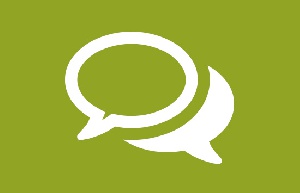Healthcare systems across sub-Saharan Africa face a number of formidable challenges. Limited energy resources, ‘brain drain’, inaccessibility to medical facilities, limited government funding, and high costs are placing tremendous strain on the healthcare system. The region bears 25% of the world’s disease burden, yet has only 3% of the world’s doctors. It has a physician to population ratio of only 13:100,000. This compares poorly to the physician to population ratio of other developing nations like India, for example, where the ratio is 60:100,000.
Patients are required to travel long distances to gain access to treatment, which is both time consuming and costly. This is largely due to the region’s underdeveloped road infrastructure. According to the World Bank, only one-third of sub-Saharan Africa’s rural population lives within 2km of fully paved road systems. Primary road systems are also poorly maintained and in dire need of restoration. The state of the region’s road networks makes it especially challenging for emergency vehicles to transport passengers and gain access to those living in the most remote areas of sub-Saharan Africa.
Due to its ageing power infrastructure, the region also suffers from endless power cuts and is incapable of meeting the power demand of the region. With a population of fewer than one billion people, the 49 countries of sub-Saharan Africa generate approximately the same amount of power as Spain, which has a population of only 45 million. This limited power supply, therefore, makes it nearly impossible for healthcare facilities – like hospitals and clinics – to effectively deliver adequate services.
Africa suffers from a growing number of HIV/AIDS patients. Of the 34 million people in the world who live with HIV/AIDS, two thirds live in Africa. The HIV/AIDS epidemic makes it all the more difficult for the region’s administrators to recover the general health of its people. The high prevalence of HIV/AIDS has placed additional pressure on other related illnesses, such as tuberculosis (TB), pneumonia, diarrhoea, and malnutrition. The spread of these illnesses increases the demand for hospital beds, adversely affecting the quality of treatment that can be metered out, and puts significant pressure on medical practitioners.
The solution: innovative African companies
Himore Medical in Cameroon has designed CardioPad, a wireless solution that enables the efficient monitoring of cardiovascular diseases (CVDs). While the majority of cardiovascular specialists practice in the capital city of Cameroon, Yaoundé, 80% of the country’s population lives in rural areas. The CardioPad, therefore, provides improved access to cardiovascular healthcare for patients living in remote areas. It is a touchscreen tablet smaller than most conventional tablets, making it easier to operate. The device includes a set of four wireless electrodes and a sensor that is attached to the patient’s chest; this generates a signal, which is then transmitted via Bluetooth to the tablet. A digitised electrocardiogram (ECG) of the patient’s heart function is then taken and transmitted through a mobile network to a second CardioPad device – situated in a city hospital – where a registered cardiologist can make a diagnosis.
The CardioPad is a pioneering product that addresses the low doctor to patient ratio by enabling the successful examination of patients for CVD, remotely. Himore Medical is the first company on the continent to manufacture a medical tablet capable of changing and saving the lives of CVD patients in rural areas.
Aviro Health is a design and technology company in South Africa that develops digital applications for healthcare practitioners to improve the quality of medical treatment. Since most healthcare practitioners in clinics and hospitals in South Africa have smartphones, Aviro Health’s applications can be accessed easily. Its product offerings include applications that help the administration of HIV/AIDS treatment, and e-learning and training platforms, for medical practitioners in the form of e-books and videos. These applications are available to healthcare professionals in South Africa, Zimbabwe, Mozambique, and Malawi.
Aviro Health provides nurses with a platform to learn and extend their knowledge, while keeping them up to date with the most recent guidelines for the administration of antiretrovirals (ARVs). This in turn assists them in administering the correct combination of medicines to HIV/AIDS patients. The application also provides HIV-positive patients access to a referral system and a HIV hotline. Aviro Health provides HIV/AIDS patients with real-time feedback and guidance to healthcare practitioners for reliable care. Aviro Health provides information that is essential for HIV patient management that is often missed in routine examinations.
The application enables nurses to treat each patient in less than 10 minutes and can be used by any nurse in a primary care setting. This enables the nurse to determine a patient’s eligibility for ARV treatment, which drugs to use, and when to start treatment.
Botswana-based Deaftronics has manufactured the first solar-powered hearing aid unit, Solar Ear. In a country where there are only 12 audiologists and five audiology centres for a population of over two million, this technology is game changing. An audiologist plays a key role in ensuring hearing aids are optimally designed and custom-fitted to an individual’s ear. However, rural communities in Botswana are unable to gain access to audiologists to test their level of hearing impairment, or obtain the necessary audiogram needed for purchasing a suitable hearing aid.
In response to Africa’s healthcare challenge, Deaftronics has developed a solar rechargeable hearing aid that is 10 times cheaper than conventional hearing aids, which require expensive batteries that need to be replaced weekly and are often unavailable in the market. The company’s solar rechargeable hearing aid is more accessible to rural or poverty-stricken hearing impaired patients in Botswana. Each Solar Ear unit includes a digital hearing aid, a solar battery charger, and four rechargeable batteries. The batteries can also be used in 80% of hearing aids currently present in the market. This invention reduces the amount of visits patients are typically required to make to care centres in Africa, Brazil, China, India, and Singapore, which also assists in saving time and money.
According to the World Health Organisation (WHO), more people across Africa have access to a mobile network (93%) than they do to electricity, piped water or a medical facility. According to the Groupe Speciale Mobile Association (GSMA), 39% of the adult population in sub-Saharan Africa had access to a mobile device in 2014, compared to the global average of 49.9%.
Sub-Saharan Africa has been the fastest growing region over the past five years in terms of subscribers and connections in the region. It has been leapfrogging developed countries in terms of internet access via mobile phones. In fact, medical manufacturing companies operating within the healthcare space are well positioned to take advantage of sub-Saharan Africa’s extensive mobile networks by developing and using mobile solutions that support their medical devices. This need for technological innovation presents companies with the opportunity to design products that address the massive shortages in healthcare systems across sub-Saharan Africa. In doing so, they can provide access to information, medical help, and tools for accurate diagnosis and management of diseases. These advances in medical devices stand to provide an unprecedented level of support to the region’s limited medical facilities, doctors, and specialists.
In the last two years, the medical device industry has become more focused on providing people in rural areas of sub-Saharan Africa with access to cost-effective, easy-to-manufacture solutions. The combination of healthcare challenges, and advancements in technology, have influenced the transition in the medical device industry and led to the development of new products that solve unique African challenges. As such, African companies have developed ground-breaking ideas, shaped in response to the region’s challenging social economic conditions, to address the medical needs of the continent. Organisations like Himore Medical, Aviro Health, and Deftronics are at the forefront of this boom in innovation and demonstrate the potential for newly technological advancements that can easily be adapted to other regions across the world.
These innovative medical devices have been inspired by the needs of African people and have revolutionised the way in which healthcare in sub-Saharan Africa is administered and accessed. This has led to low-cost ground-breaking solutions born from a necessity that is poised to transform the sub-Saharan Africa healthcare system. However challenging the healthcare environment may be, sub-Saharan Africa presents significant opportunities for developing technologies that transforms lives. The medical device industry in the region has transitioned into a market that is successfully coming up with cutting-edge low-cost devices to empower people in rural areas with access to much-needed medical attention.
This article was written by Ilk-nür Hendricks, a Best Practices research analyst at Frost & Sullivan.
Opinions of Thursday, 22 October 2015
Columnist: Ilk-Nur Hendricks



















